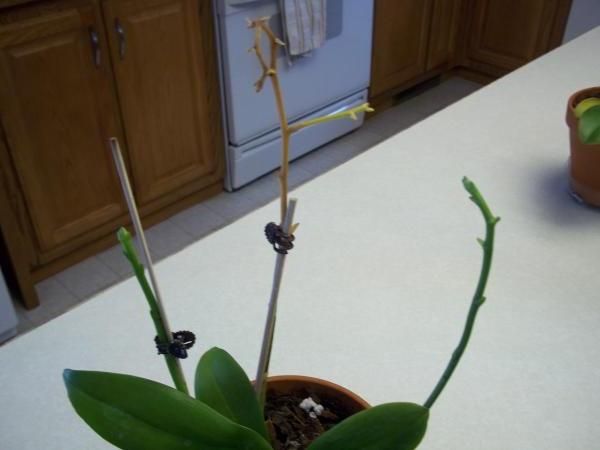 Phalaenopsis is one of the most common and undemanding types of orchids in care. Typically, flower shops purchase samples that bloom. For a long time they delight the eye with luxurious flowering.
Phalaenopsis is one of the most common and undemanding types of orchids in care. Typically, flower shops purchase samples that bloom. For a long time they delight the eye with luxurious flowering.
But then the orchid can bloom, because of which it is often thrown out, because it loses its attractive appearance. Do not do this. Phalaenopsis orchid is a perennial plant. If you provide her with proper home care, she will certainly bloom further.
Content
Rest period - care features
When phalaenopsis has faded, it should provide him with a period of rest. In fact, the flower is not particularly needed, since in the natural environment it grows in places with almost identical climatic conditions throughout the whole year. However, rest will allow young peduncles to form more quickly and will contribute to intensive flowering in the future. For this reason, it is recommended to give the orchid a rest before the next flowering.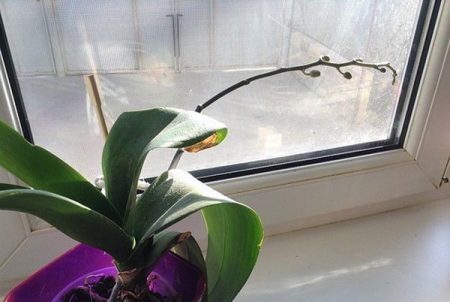
In this period, the plant does not need to be fed. In addition, for about a month it is not watered. It is desirable to lower the temperature to 18 ° C. After that, watering of phalaenopsis is resumed, and the temperature is increased to 25 ° C. As a rule, after completion of artificial drought, the flower will form a new arrow.
What to do with a flower stalk
When all the flowers fly around, it is necessary to inspect the peduncle. When it is completely yellow or dried - leave it pointless. In such a situation, it is completely cut off. Then, after the dormancy period is completed, a new peduncle will form.
Peduncle pruning
With a completely dry or yellowed arrow, its removal is required. Do not try to tear it out - this can lead to damage to the plant. In addition, do not need to cut too close to the leaves. The stump remaining after cutting should be at least 2 cm high.
The arrow is cut off with sharpened scissors or a small secateurs. Slice processing is not necessary.
When drying only the top of the peduncle, it is cut to living tissue. You can even leave a couple of centimeters above the dried area. This is done so as not to cause damage to the living peduncle tissue and not to provoke further death.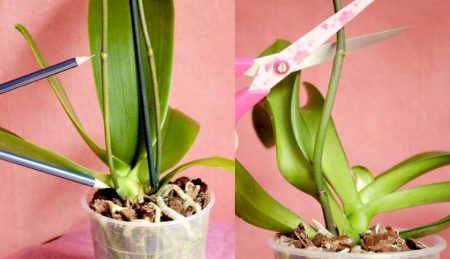
Phalaenopsis orchid has faded, what to do with the arrow
After the orchid has finished blooming, if the arrow of the orchid remains green, you can not cut it. There is a chance that a flower stalk with buds will someday continue to grow from its upper part, although this does not always happen. Often it simply dries up. When the arrow has remained green, but its top has become yellow, brown or dried, you need to cut it.
Then, as the tip is trimmed, the process of germination of sleeping buds may begin. This happens about three months after flowering is complete, sometimes earlier. But, again, this does not always happen. Sometimes a cut flower stalk stands for a while, and then dries. Therefore, if you want to get a blooming phalaenopsis sooner, you should remove the old peduncles.
How the phalaenopsis orchid fades
When the flowering of the phalaenopsis is completed, he will have a bare flower stalk. There are several scenarios: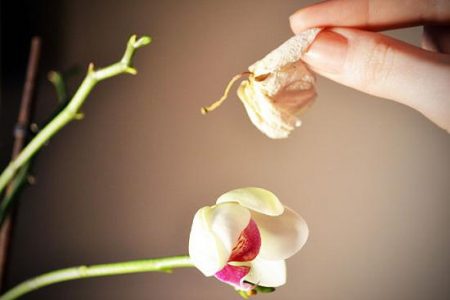
- The flower stalk will begin to bloom and form new buds.
- There will be kids.
- The flower stalk will dry.
To determine whether the arrow will continue to grow, you should pay attention to its top, which is similar to a kidney. Young shoots can form from it, however, only on condition that it remains green. If it withered - there will be no growth. The flower stalk can begin to grow not only from the top.
Below the fallen flowers, as a rule, a certain amount of sleeping buds is formed on it, also capable of starting to grow under favorable conditions. They in some cases contribute to the formation of new peduncles or the formation of children. Often, side arrows form from such kidneys. This type of orchid does not give children very often. To get young plants, it is necessary to carry out stimulation with drugs that accelerate growth.
Rules for the care of the Phalaenopsis orchid after flowering
When the dormant period ends, you need to provide the flower with competent care, which includes the following items:
- Watering. Phalaenopsis is watered by immersing the pot for 20 minutes in water. In the autumn and spring months, the orchid is watered once a week, winter - once every 2 weeks, summer - twice a week. For watering, only warm, soft water should be used.
- Temperature mode. The optimum temperature for orchids is considered to be from 25 to 30 ° C in the warm season, from 20 to 25 ° C in the cold. If the thermometer values fall below 12 ° C, this leads to an imminent death of the flower.
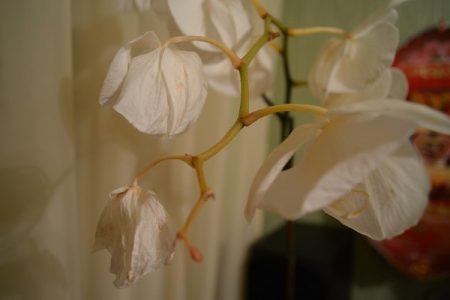
- Lighting. The light must be scattered. Exposure to direct sunlight can cause leaf burns.
- Humidity. In order for the plant to develop correctly, it is necessary to provide a fairly high humidity. To do this, spray the flower from the sprayer every day. Avoid the accumulation of water in the axils of the leaves, because because of this, the orchid can rot and die.
- Top dressing. It is recommended to fertilize phalaenopsis once a month, using fertilizers designed specifically for this variety of indoor plants. When applying fertilizers, you must strictly adhere to the instructions.
Orchid transplant after flowering
The most favorable period for transplanting the Phalaenopsis orchid is after flowering. It should be noted that this is carried out only in case of urgent need. A plant needs a transplant in the following cases: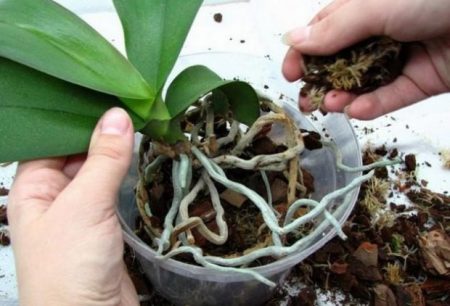
- Deterioration of the substrate.
- Lack of potted space.
- Diseases or decay of the rhizome.
Before transplanting the plant, you need to choose the appropriate pot in which the roots will be spacious.
Preparation of soil for a flower transplant
The easiest way to purchase a prepared substrate in a flower shop. Self preparation of the soil is also an easy task, the main thing is to choose the right components.
The set of ingredients for the substrate is as follows:
- tree bark;
- sphagnum;
- peat;
- humus.
Perlite, expanded clay, pine cones, polystyrene can be added to this list.
In order not to harm the plant, it is necessary to properly prepare the components. Bark must be dried. Expanded clay is needed as drainage, which means that it must be in the form of rubble. The bark and peat should be crushed into small chips. Leave the sphagnum for 24 hours in water to get rid of insects. Then the ingredients must be steamed and dried.
Orchid transplant
When the soil is prepared, you can begin to plant. Carefully remove it from the pot, shake the ground from the roots. The root system itself should be rinsed in warm water and inspected. Cut off rotten roots to a tissue not affected by rotting. It will be useful to treat the slice with an antiseptic, such as crushed coal.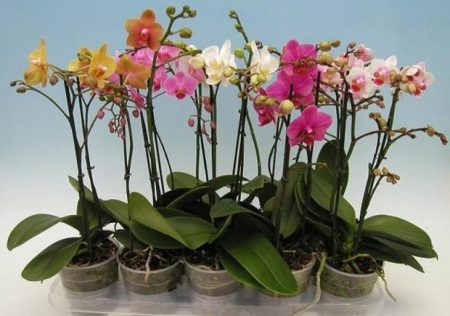
Directly transplantation is carried out as follows:
- The new pot must be partially (approximately one third) filled with prepared soil, drainage should be installed - polystyrene, granite, expanded clay are suitable for these purposes.
- Lay the roots and carefully sprinkle them with a substrate on the outside and inside. Place a piece of foam under the base to prevent excessive moisture.
- Gently squeeze the roots and sprinkle with soil. Care must be taken to ensure that the air roots remain above the surface.
Reviews
Flower lovers leave a lot of positive reviews about such a plant as the Phalaenopsis orchid. Despite the fact that caring for it seems rather troublesome and time-consuming, if you follow certain rules, then a beginner will cope with all the work. Even when the orchid has faded, the necessary operations - pruning arrows, transplanting, ensuring a dormant period - are performed without much difficulty.

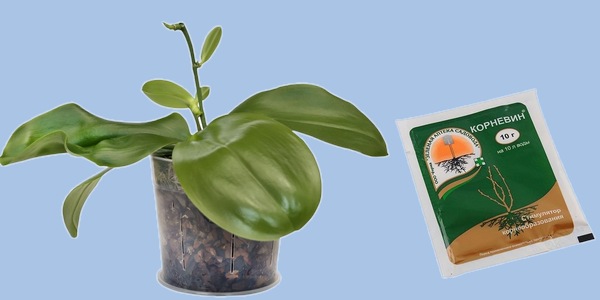
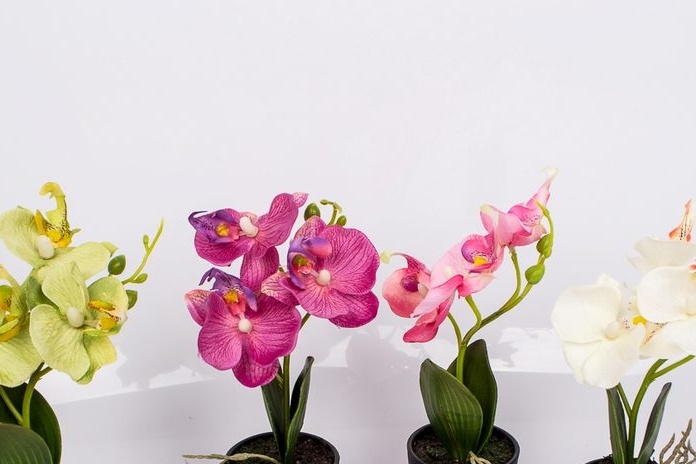
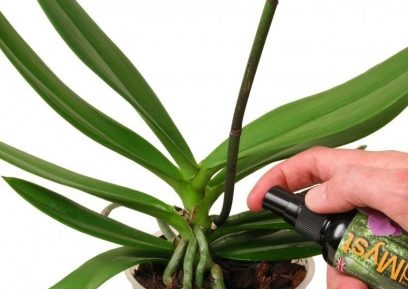
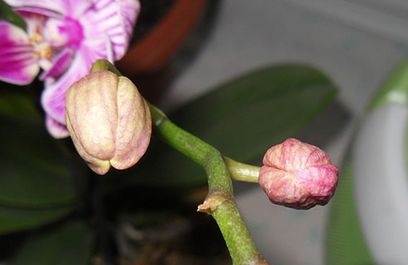 Reasons why orchids fall flowers and what to do
Reasons why orchids fall flowers and what to do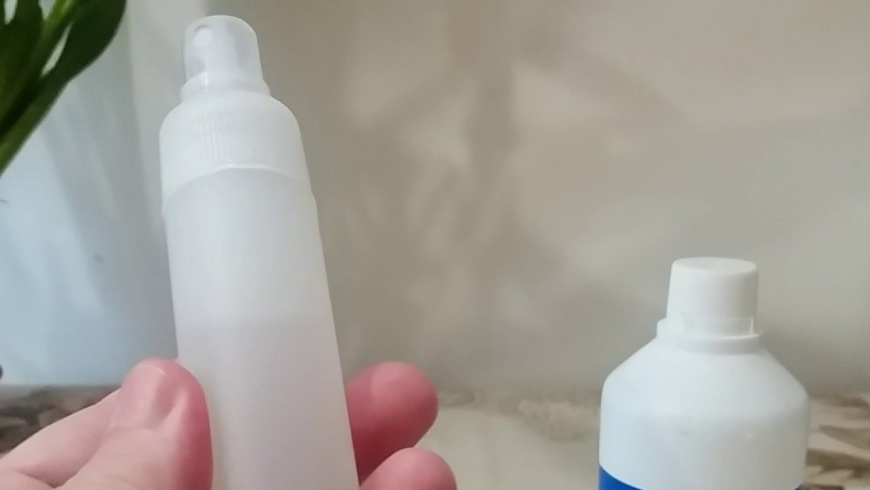 How to use hydrogen peroxide for orchids and why
How to use hydrogen peroxide for orchids and why Midges are wound up in the orchid: effective ways to get rid
Midges are wound up in the orchid: effective ways to get rid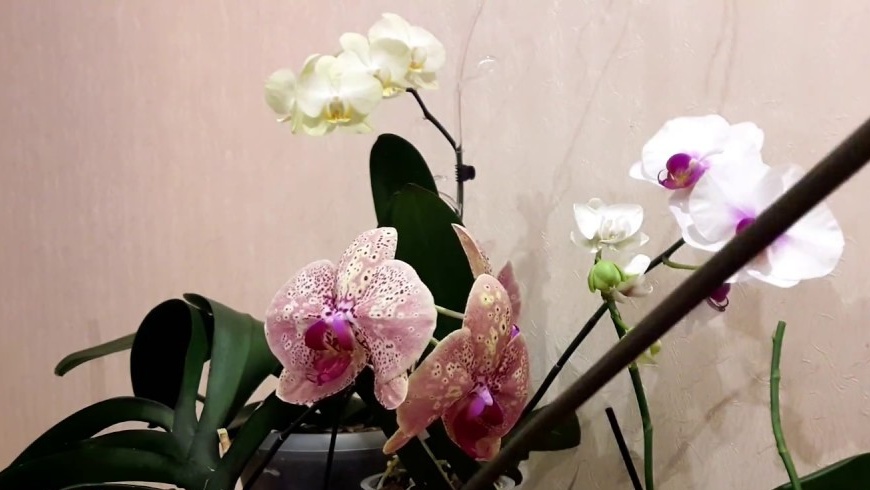 Is it possible to transplant an orchid during flowering
Is it possible to transplant an orchid during flowering